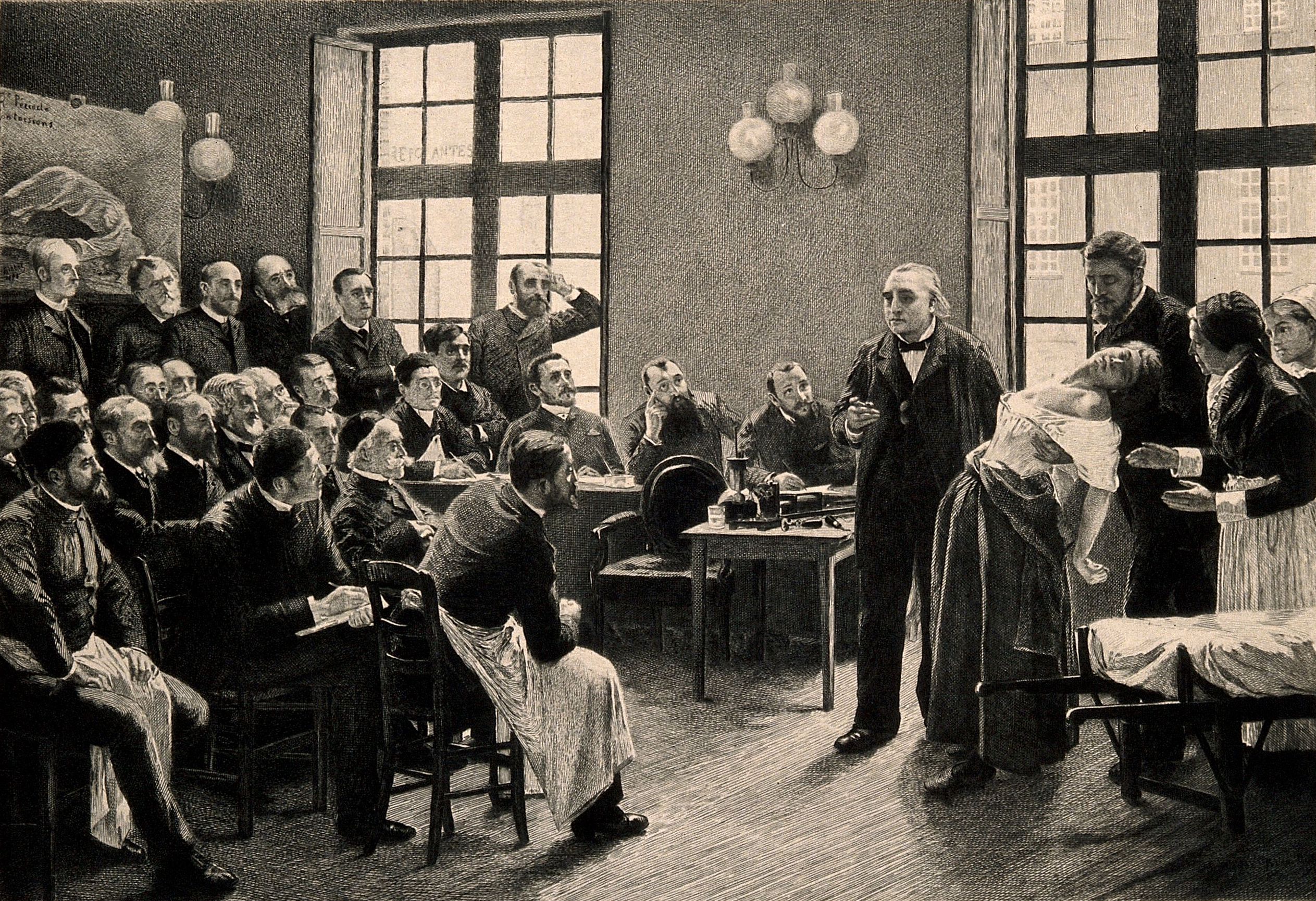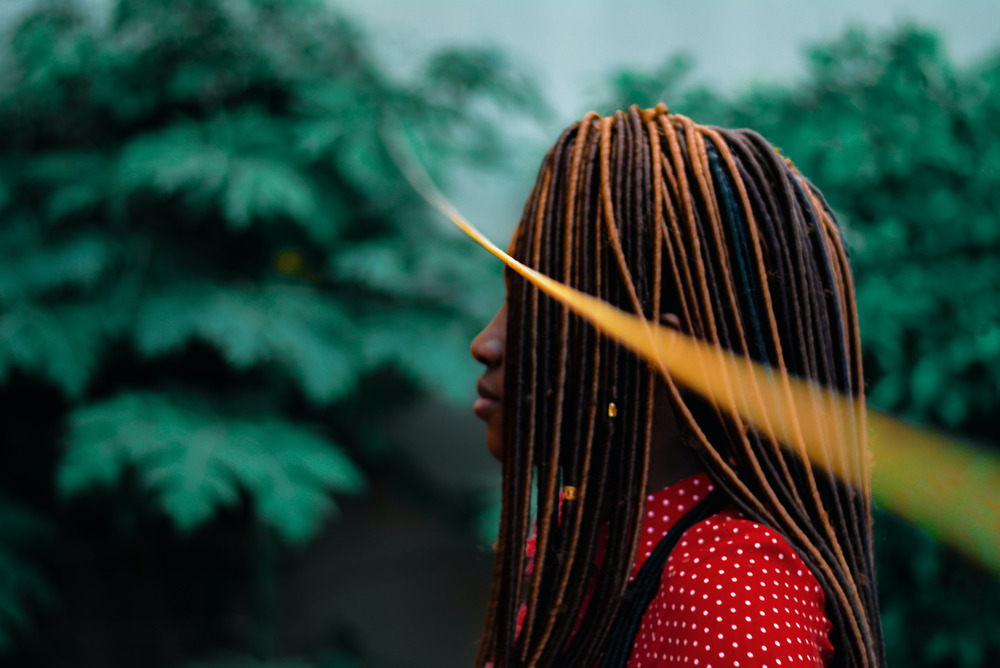interviews
Capitalists Built the Stage and We’re All Performing Health
In her memoir "A Matter of Appearance," Emily Wells isn't selling silver linings or looking away from hard truths

In a cultural milieu that is increasingly recognizing the value of narratives that describe the experience of chronic pain and illness, Emily Wells’ memoir is a unique contribution. In some ways, A Matter of Appearance is not a memoir at all, though that’s where you’ll find it shelved in bookstores. To be sure, Wells’ story is included in its pages. But so are a collection of other stories, from a history of medical misogyny to an examination of ballet pathology, to a (searing) critique of capitalist systems. If literary genres were amenable to nuance, or if I owned a bookstore, this book would sit squarely in the “A Little Bit of Everything” section. (It’s probably a good thing I don’t own a bookstore.)
Like Wells, I am deeply skeptical of culture, even as I appreciate it profoundly and make a living wading into it. Cynically, I suspect the recent explosion in sick lit is attributable not only to an influx of formidable literary talent—writers like Sarah Manguso, Meghan O’Rourke, and Chloe Cooper Jones—but also an awareness in industry that pain equals profit. In my imagination, there is a corporate goblin behind every lifesaving drug and beautiful piece of art asking, And how much can we sell it for? If reality in any way approximates my imagination, I want people like Emily Wells writing about it.
Wells and I connected via Zoom to talk about the aesthetics of illness, the visualization of pain, and whether suffering can be, for lack of a better term, productive.
Wynter K Miller: One of the things I like about your memoir is that it doesn’t try to make illness happy. You don’t try to soften the blow for readers. You are very explicit about the conclusions you reach—and they are bleak. You write that pain has not taught you anything, that there is not a purpose for pain, and that the experience of it is not “for” something. I appreciated that you were adamant about not falling into the trap of making people feel better. Can you talk a little bit about why you feel that suffering does not augment art? And do you truly believe that pain has not taught you anything?
Emily Wells: It’s hard because it kind of feels ungracious to write a book where you don’t have any silver linings or wisdom to offer, where it’s ultimately just kind of trying to explain suffering. But yeah, I am really generally opposed to learning from pain, narratives of wisdom from pain—I think people are finally getting a little sick of those because I’m reading so many more books where people are doing something else instead. I do like what Audre Lorde wrote in The Cancer Journals about wanting to finish her book so that her pain wouldn’t be wasted because that seems to treat the pain as the material itself, which feels a bit more honest than trying to use it to acquire something or feel differently. Yeah, it’s rough.
WKM: Something that you said in the book makes me wonder, though. You teach, and you write about how as a teacher—because you’ve experienced pain and because you know what it looks like to hide pain—you can see when other people are doing that. So, you can look at your students and you can recognize when something more might be going on than the student is saying. It seems to me that whether you admit it or not, your experiences have made you compassionate. And they’ve given you a helpful perspective in that you’re able to recognize and see things that maybe somebody can’t tell you.
EW: That’s a good way of thinking about it. Yeah, I’m comfortable with that silver lining.
WKM: Although, to be clear, the memoir is also explicit in its conclusion that even if pain has done that—given you compassion—it’s still not worth it. It’s not a good trade-off.
EW: Definitely not. But at the same time, I really don’t believe that there’s a true, healthy-sick binary. Like, yeah, I got sicker younger than most people, but everyone will eventually become ill. Either everyone is sick or will become sick. So that kind of compassion is something I would hope that we can find ways to apply more multi-directionally. It shouldn’t be just the sick applying it to others who are sick.
WKM: You had a boyfriend, who makes a brief cameo in the memoir, and he told you that “there’s no such thing as an aesthetic illness.” What do you think he meant by that? And do you agree with him?
EW: I think that at the time, this was before diagnosis, I was going through this pain, and it was kind of easier almost to think about it metaphorically. Right? And I was reading about hysteria, and it was easy to think about those symptoms [of hysteria] as, like, protest against misogynist cultural norms, or something like that. And then, even with my own symptoms, I was experiencing them as real, but I was also kind of thinking about them abstractly, or as metaphors, or as some kind of aesthetic protest against conditions. It was a way to sidestep the real questions.
WKM: So, he thought that you were intellectualizing your illness to make it more palatable—sexier?
EW: Yeah. It’s somewhat tied into—I wrote about it a little bit—but, you know the sex appeal of the tubercular woman.
WKM: The sex appeal of tuberculosis is maybe a great way of segueing into the medical and socio-cultural history you explore in your memoir. Charcot is a central figure, and his research really captivated your imagination (also true of another chronic illness memoirist, Emma Bolden, who I interviewed in 2022). What specifically did you find so alluring about Charcot as a case study, and what drew you specifically to his work with patients like Augustine at the Salpêtrière?
EW: I think it just feels like it has relevance today. Charcot had this expectation that every illness would eventually be traced to some kind of physical pathology on the body. He was basically just trying to find a lesion that he thought caused hysteria. When I started reading about him, I was really struck by the way that people outside of psychoanalysis talk about this period in history—it felt like they were kind of missing the point about Charcot setting up our current cultural trend of wanting everything to be biological in order to spare the patient from stigma. Because we still believe that! We still believe that if it can be traced to a chemical imbalance or something biological, then the person is devoid of blame. And if not, if you can’t trace it, [the illness] is just a lack of willpower or because of personal choices. So, his research was meant to save these people from stigma, but ultimately it was dehumanizing because he was completely neglecting everything that they were saying about their experience. And it’s interesting to me that people are kind of gleefully dismissive of Freud, who actually had something closer to the right idea, at least in the sense that he was paying attention to what people were describing as their experience.
WKM: Charcot also went about his research in a very visual way. To me, it feels like in addition to his medical interests, he also had some sort of aesthetic goal. He took very curated photographs of his patients, and his research became performative.
EW: Exactly. If he’s trying to render illness as biological, why is the diagnostic and classification process so obsessively visual? It was just incredible. But I think for me, the representational power of those pictures comes from how they really failed, despite their best efforts, to erase the patient completely. The women in them kind of demand to be looked at in a certain way. (Of course, that’s also me trying to lessen the pain of bearing witness by prescribing them some agency that they probably did not have.)
WKM: What do you mean by that?
EW: There’s something that seeps through. I mean, it’s like punctum hunting, right? Because it’s like the thing that pricks you in the photograph. It’s hard to resist the impulse to punctum hunt with those photographs—it’s clearly a performance. They’re under hypnosis. They’re not artists. They’re not taking the photos themselves. You can’t abolish the medical gaze that created them—and yet, there’s just something really enticing about them. They’re beautifully lit. They’re kind of rupturing with excess. They’re fascinating. And so many people have been impacted by them in that way. The surrealists were completely obsessed with those photos. Choreographers have created so many interpretive hysteria dances. It’s difficult to describe what they capture without resorting to a lot of abstraction.
WKM: And why did that element of the photographs—whatever you call it—make you want to write about your own illness?
EW: I’m really interested in what happens when we bind text and images together—that kind of like Sebaldian, multilayered encounter where the text features an image, and the image then kind of defies its documentary purpose. And I think that for a lot of people, that’s what feels impactful about these photos. Somehow, when we remove them from their medical context, they’re able to kind of defy their documentary purpose. I don’t know if that answers the question.
I’m really interested in what happens when we bind text and images together—and the image then kind of defies its documentary purpose.
WKM: Do you mean that they become less medical document and more visual art?
EM: Yeah, and I think another part of why those photographs are so interesting is that we have to feel kind of implicated when we find them. We see them as beautiful, right? But these people were suffering—[the hospital] was, in some sense, like a prison—so we can’t be super into the fact that we find them so beautiful. It’s kind of troubling.
WKM: It reminds me of something Chloe Cooper Jones talks about in her memoir—she writes about disaster tourism in this context, and the idea that we go to sites of incredible human suffering to “experience” it secondhand. And there’s something about that that is both gross and very human—similar to what you’re describing with these photographs. Whether or not it’s beauty per se, there’s something about them that draws you in as the viewer. But then there’s also something very uncomfortable about recognizing that what you are finding beautiful, or using for creative inspiration, is somebody in very personal, very real pain. Is that something that you grappled with when you were considering the photographs for the memoir?
EW: Definitely, and especially because the photographs are of women, so you end up telling your story through other women. And you kind of approach it maybe even with a totally egotistical idea that there can be some kind of atonement of wrongs. But that’s not how it works. You can retell the story, you can try to use the photographs out of their context, but ultimately, yeah, it is still kind of disaster tourism. It’s like everyone rubbernecking on the freeway when there’s an accident, they just can’t stop themselves.
But I was also inspired, not necessarily content-wise, by books that showed the way someone can use another woman’s story—or in Augustine’s case, the lack of story—to suss through concepts larger than the woman herself. Like the Nathalie Léger trio that Dorothy put out, those are great. I guess if I hadn’t seen examples of that being done in a way that felt respectful and kind of generative, then I might have been more reticent.
WKM: At the end of the memoir, you give a pretty succinct list of what true accommodation of illness would look like. I loved that list. I laughed because it was practical—universal health care, medical debt forgiveness, not tying health to capital—but then also included a curveball: “the abolition of all wellness webinars.”
EW: No one has ever learned how to be healthy through one of those mandatory wellness webinars that we all have to do for our jobs. It’s just so asinine. Like I said, so many of my students are depressed or going through mental health crisis after mental health crisis and the resources that I’m advised to point them toward would push anyone over the edge. It’s the absolute opposite of what we should be doing for these kids. If I’m occasionally a little bitter when I’m listing true accommodations, it’s probably because I’m taking an opiate to get through a mandatory wellness webinar.
No one has ever learned how to be healthy through one of those mandatory wellness webinars.
WKM: Ultimately, I’m sure it’s more about liability than anything else. Workplaces need to be able to say: we checked this box. I think it’s also related to the growth of the wellness industrial complex in general. There’s an inclination on the part of anyone who is aware that you’re sick to prescribe things that will make you not sick. Can you talk about your experience of prescribed wellness?
EW: I think wellness has become a way to hold people accountable for failing to live up to this obligation to live healthfully. So even if your illness is organic disease, they’re selling the illusion that health can be bought through consumer choices, that if you just made the right choice, you bought the right products, you went to the right clinic in LA, you wouldn’t be feeling the way you feel. And I think that ties back into trying to lessen the pain of bearing witness. Because if someone’s sick, despite making all the right choices, then that’s an uncomfortable thing to look at.
WKM: There’s an interesting discussion in the book about performing health versus being healthy. When we’re talking about invisible illness, there’s some amount of comfort, I think, in being able, sometimes, to perform. But it’s a double-edged sword, both because the performance is exhausting and because maybe people won’t take your illness seriously if they can’t see it.
Should the goal be that we encourage people who are ill to be honest about how they’re feeling? Because often that is not what we’re doing. We’re strongly discouraging them from saying how they feel. And if a person is honest, they risk losing something—like their job.
EW: I guess I feel that if society did the real accommodating on a structural level, there wouldn’t be the same need to render your suffering or to make it more or less visible to others. I wish we could create a society gracious enough that people could be as visible or invisible as they felt like being, and be accommodated regardless.
WKM: Augustine was Charcot’s most famous patient, and your memoir ends with the end of her story—which is that she escaped from the hospital by disguising herself as a man. That is so profoundly evocative of medical misogyny and how difficult it is to be a woman in the medical system. And it’s also an incredibly bleak way to end a memoir. Why did you choose to end your story there?
EW: Yeah, dressing as a man is what gave her the kind of visibility she needed to enter society as a normal civilian. At that point, her body had been so medicalized. She had stopped allowing herself to be hypnotized. She was clearly done. And that’s really all we know. Whatever her reasons, she was like, I’m not going to do this anymore. And then she escaped dressed as a man. The only way she could re-enter healthy society, if you will, is by looking male. So regardless of whether her symptoms were cured, she kind of finally cured herself of this abstract disease by concealing her gender.









